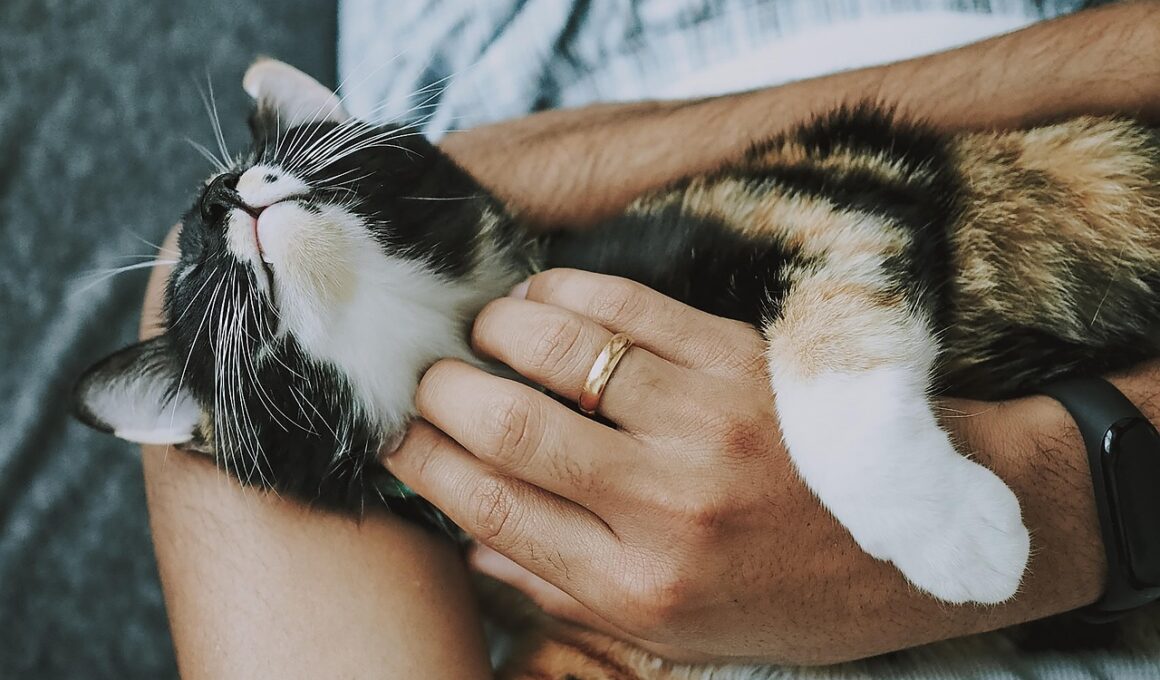Milestones in Spay and Neuter Programs for Shelter Cats
Spay and neuter programs have become crucial in managing the cat population in shelters. These initiatives contribute significantly to the overall health and well-being of felines, helping reduce the number of homeless pets. By providing affordable spaying and neutering options, shelters ensure that cats are not contributing to the surge in stray populations. Education campaigns are important to raise awareness about these programs and encourage pet owners to participate actively. Through collaboration with local veterinarians and community organizations, shelters can offer low-cost clinics. Additionally, outreach efforts aim to inform the public about the benefits of spaying and neutering, such as improved health and behavior. Many shelters have reported a drastic decline in the number of kittens brought in after starting their programs, highlighting their effectiveness. These solutions are not just about numbers; they save lives and enhance the quality of life for hundreds. Success stories often inspire further engagement, prompting more individuals to consider adopting and fulfilling their responsibility as pet guardians. As these milestones are celebrated, it’s essential to recognize the collective efforts it takes to realize successful spay and neuter initiatives.
Community Involvement and Education
Community involvement plays a key role in the success of spay and neuter programs for shelter cats. Engaging local communities through awareness campaigns fosters greater participation. This may include hosting informational sessions, distributing flyers, or utilizing social media platforms. The knowledge imparted helps potential pet owners understand the importance of feline population control. Workshops can be organized, providing attendees with valuable information on effective pet care, resulting in a decrease in pet abandonment. Collaborating with schools and universities ensures that young individuals gain an understanding of responsible pet ownership. Various volunteer opportunities can also be created, allowing community members to actively support the cause. Volunteers are essential in managing and operating affordable spay and neuter clinics alongside veterinarians. Moreover, success stories shared through local media amplify the message, encouraging more residents to consider having their pets sterilized. By increasing awareness, shelters can demonstrate the positive outcomes of these initiatives. Reports from shelters often reflect a community’s changing attitude towards adopting instead of buying pets. When individuals recognize their collective strengths, they can tackle the challenges of overpopulation collaboratively, ultimately reducing the number of unwanted cats.
Data collection and analysis are essential components of effective spay and neuter programs. Tracking the number of cats sterilized provides insights into the program’s impact. Gathering data helps shelters identify trends that can inform their strategies and outreach efforts. For example, understanding which areas have higher rates of feline abandonment can guide resource allocation and targeted community education. Statistics about the number of litters born before and after implementing spay and neuter initiatives highlight their benefits. These numbers can be shared with stakeholders to illustrate the need for continued funding and support. Furthermore, documenting the health improvements observed in sterilized cats underscores the importance of these programs. Shelters often compile reports to share with local government officials, showcasing progress and advocating for additional resources. The data-driven approach ensures that programs remain effective and financially viable. Progress is measured not just in reduced numbers but improved health outcomes for cats in the community. By emphasizing evidence-backed success, shelters can secure ongoing investments from sponsors and supporters. Engaging the public with these positive statistics enhances the visibility of the initiative, making it more appealing for supporters and participants alike.
Partnerships with Local Veterinary Clinics
Establishing partnerships with local veterinary clinics significantly enhances spay and neuter programs. These collaborations can provide important resources and professional expertise that shelters might lack. Local veterinarians can offer their services at reduced rates, which is crucial for shelters aiming to provide affordable options for pet owners. Working together, shelters and clinics can organize community events where residents can bring their pets for low-cost surgeries. This not only emphasizes the program’s importance but also encourages community engagement. Some clinics may even initiate mobile spay and neuter units, which can reach underserved neighborhoods, further expanding access. These partnerships facilitate knowledge sharing and training opportunities between shelter staff and veterinarians. Involving veterinarians in educational workshops helps inform the community about the broader benefits of spaying and neutering, such as decreasing certain health risks in pets. These collaborative efforts lead to better outcomes for the feline population within the community. Success stories stemming from these partnerships can motivate other clinics to join in. Ultimately, the collaboration nurtures a network that enhances both animal welfare and public education efforts, creating a more compassionate environment for all pets.
Success stories from spay and neuter programs illustrate their profound positive impact on shelter cats. Numerous shelters report significant improvements in the number of cats adopted and reduced euthanasia rates after launching these initiatives. By facilitating the ability of owners to spay and neuter, shelters see a marked decline in the influx of kittens. For example, a shelter’s proactive measures, like outreach programs, led to widespread participation, effectively increasing sterilization rates. These results build a strong community narrative around responsible pet ownership, encouraging storytelling to inspire others. Personal testimonies from adopters who benefitted from these programs highlight the positive real-world outcomes. Comprehensive case studies are also essential to demonstrating the effectiveness of spay and neuter initiatives. Through articulating both the challenges faced and successes achieved, shelters garner support and funding from the community. Academic research supports these narratives, confirming that effective sterilization programs correlate with overall decreases in dispossession rates. As stories of transformed lives circulate, they resonate deeply with prospective pet owners, inspiring decisions that cultivate a culture of compassion and responsibility towards pets. The celebration of these successes reinforces the belief in ongoing efforts, paving the way for future milestones.
Measuring the Impact of Spay and Neuter Programs
Measuring the impact of spay and neuter programs on community cat populations is integral to refining strategies. Regular assessments of population metrics reveal trends over time, providing a comprehensive framework for evaluating success. Understanding decreases in kitten births allows shelters to communicate effectiveness to stakeholders. Surveys could also be conducted to gauge community awareness of these initiatives. Feedback from community pet owners can inform shelters about potential obstacles and areas for improvement. Analyzing these impacts helps advocate for ongoing support and funding. Longitudinal studies keep track of how these programs affect long term outcomes, tracking not only the number of cats sterilized but also changes across various demographics. These insights guide efforts to tailor outreach to specific populations that might remain underserved. Each milestone achieved reflects a collaborative commitment to ongoing improvement and animal welfare. When shelters gather and disseminate data about program success, they can adjust based on lessons learned. Efforts to quantify impact engage the community further and promote awareness about the critical role of spay and neutering for stray cats. Evaluating success promotes accountability and transparency within animal welfare movements.
The way forward for spay and neuter programs lies in sustainability and community engagement. Establishing permanent, accessible clinics ensures that spaying and neutering remain options for all pet owners. Ongoing collaborations with veterinary professionals will continue to enhance the affordability and reach of these services. Expanding partnerships with local organizations can maintain momentum and sustain outreach efforts. Comprehensive education on responsible pet ownership must be prioritized, ensuring residents understand the dire consequences of neglecting sterilization. Investing in public relations campaigns can keep the conversation about spaying and neutering alive in community forums. Promoting success stories fosters consistent community involvement. Grants and sponsorship opportunities can support expanding these successful initiatives, ensuring they reach even broader populations. Societal attitudes will continue to evolve as more people adopt responsible practices, spurring further improvements in animal welfare. Continuous engagement ensures that shelters maintain momentum in their outreach efforts through perseverance and education. Collectively, these strategies aim for significant advancements in controlling feline populations, ultimately preserving lives. Every milestone achieved becomes part of a larger story that reflects collective effort and commitment to caring for shelter cats. Sustained progress relies on all stakeholders working harmoniously towards the shared goal of reducing overpopulation.



